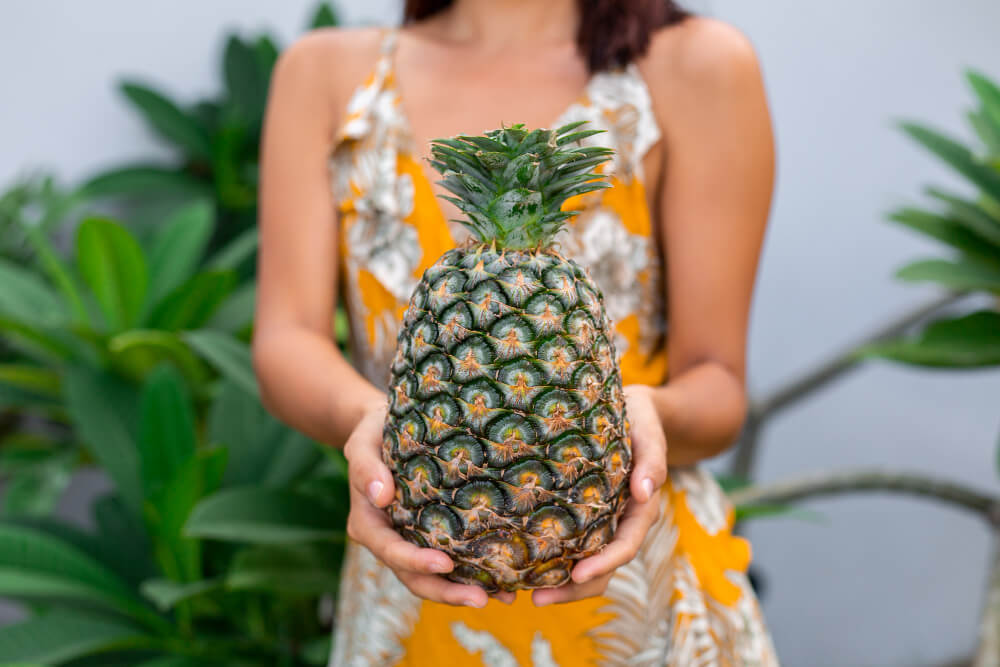Can a Pineapple Plant Produce More Than Once?

Pineapple plants are a tropical wonder that often raises curiosity among gardening enthusiasts and those new to growing fruits. One of the most common questions about pineapple cultivation is whether a pineapple plant can produce more than once.
If you’re wondering about the potential for multiple harvests from a single plant, you’re not alone! In this article, we’ll explore the life cycle of a pineapple plant, how it produces fruit, and whether it’s possible for a pineapple plant to produce more than one fruit over its lifetime.
Table of Contents
Understanding the Pineapple Plant’s Growth Cycle
The Pineapple Plant Life Cycle
Before diving into whether a pineapple plant can produce more than once, it’s essential to understand its growth cycle. A pineapple plant (Ananas comosus) typically goes through several stages in its life:
- Planting: This is the beginning stage where a pineapple crown, sucker, or slip is planted into the soil.
- Vegetative Growth: Over the next 12 to 24 months, the plant focuses on developing a healthy root system, leaves, and the central rosette.
- Flowering and Fruiting: Once the plant matures, it enters the flowering phase, during which it produces a single flower stalk that eventually turns into a pineapple fruit.
- Harvesting: After about 18 to 24 months, the fruit is ready to be harvested.
Now that we know the stages, let’s explore the key question—Can a pineapple plant bear fruit more than once?
Can Pineapple Plants Produce More Than One Fruit?
The Myth of Multiple Fruits Per Plant
It’s important to understand that pineapples plants typically produce only one fruit per cycle. After the plant flowers, it will form a single fruit at the center of the rosette. This fruit will grow for several months until it is ready to be harvested.
However, the plant doesn’t end its life after a single fruit is produced. But, will it continue to yield more fruits from the same central plant? Let’s dive deeper to answer this.
What Happens After the First Pineapple?
After the first pineapple is harvested, the original plant does not simply wither away. It goes through a process known as “rejuvenation.” While the initial fruiting cycle is completed, there are several methods by which the plant may continue producing fruit in the long run.
How Can a Pineapple Plant Produce More Than Once?
Using Suckers and Slips to Grow New Plants
Pineapple plants can indeed produce multiple harvests, but not from the same fruit. Instead, the plant generates “pups” or “offsets” called suckers and slips, which are small shoots that grow from the base or from the flower stalk after the initial fruiting cycle. These shoots can be used to grow new pineapple plants.
- Suckers: These are shoots that grow from the base of the pineapples plant. Suckers can be carefully removed and replanted to grow new pineapples plants.
- Slips: These grow from the flower stalk after the plant has fruited. Slips can be harvested and replanted just like suckers.
Both suckers and slips can produce fruits, and the new plants will eventually bear fruit after their own flowering cycle. So, technically, the original pineapples plant can lead to multiple harvests, but not directly from the same plant.
The Role of Ratoons in Pineapple Production
Ratoons are another way in which a pineapples plant can continue to produce fruit over time. These are secondary shoots that sprout from the base of the plant. When the main fruit is harvested, ratoons can continue the cycle of growth and fruiting. Though ratoons generally produce smaller fruits, they can still yield edible pineapples.
Regrowing Pineapple from the Crown
Another popular method for growing pineapples is using the crown of the fruit. This involves cutting off the leafy top of a mature pineapple and planting it in soil. While this won’t lead to more fruit from the original plant, it gives the opportunity for a new plant to grow, which will eventually bear fruit after its own growth cycle.
Factors Affecting Pineapple Plant’s Ability to Produce More Than Once
Climate and Growing Conditions
Pineapple plants thrive in tropical and subtropical climates. They need a lot of sunlight, warm temperatures, and well-draining soil to grow effectively. If your pineapples plant is growing in a climate that doesn’t support these conditions, it may struggle to produce new pups or ratoons.
Plant Care and Maintenance
Proper care is crucial if you want your pineapple plant to produce multiple harvests. Regular watering, appropriate fertilization, and timely removal of old, dead leaves will help ensure the plant stays healthy and continues to produce suckers, slips, or ratoons.
Plant Variety and Genetics
Certain varieties of pineapple may be more productive or resilient than others, making them better candidates for producing multiple harvests. Some hybrid pineapple varieties are bred for increased fruit production and may perform better in producing offspring through suckers and slips.
Can Pineapple Plants Live for Multiple Years?
Lifespan of a Pineapple Plant
Pineapple plants are usually considered perennial, meaning they can live for multiple years, but their productivity typically declines after the first few fruiting cycles. While individual pineapple plants may produce fruit only once or twice, the suckers and slips they generate can give rise to new plants that will continue the cycle.
How to Maximize Pineapple Production
Ensuring Healthy Growth and High Yields
To ensure that your pineapple plant is producing as much fruit as possible, follow these tips:
- Prune the Plant Regularly: Remove old, dead leaves to allow better air circulation and sunlight penetration.
- Fertilize Appropriately: Use balanced fertilizers to provide the plant with the nutrients it needs.
- Monitor for Pests and Diseases: Keep an eye out for any pests or diseases that may hinder plant growth.
Replanting Suckers and Slips
Harvesting and replanting suckers and slips as soon as they appear will ensure continuous production. Make sure to give each new plant adequate space to grow.
Conclusion: Pineapples Can Produce More Than Once—Indirectly
To sum it up, a pineapple plant typically produces only one fruit during each growing cycle, but it can indirectly yield more fruit through the production of suckers, slips, or ratoons. While the main plant will not bear fruit more than once, you can keep the cycle going by carefully cultivating the new shoots that grow after the first fruit is harvested. As a pineapple exporter, understanding how to grow and manage these secondary plants is crucial, allowing you to continue to enjoy fresh pineapples year after year!







